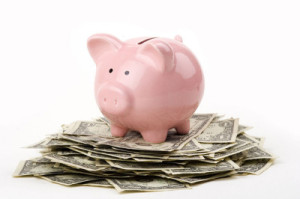Paula Groves is Main Street’s Senior Vice President – Business Consulting. This is part of her ongoing series of best practices and tips for small business owners. Never miss a tip by signing up for our newsletter.
If I ask a small business owner, “Do you want to grow?” They say, “Yes, of course!” If I ask, “Do you know how to grow?” They say, “Yes of course.” Then they rattle off a list of marketing techniques like:
- Flyers
- Advertisements
- Free samples
- Coupons
- Yelp, Facebook and Twitter
- Driving website traffic
- Etc. etc. etc.
“The list is endless,” they sigh, sounding a bit tired. Now if I ask, “Do you know how to grow your business without losing money?” They often look a little dumbstruck.
Most of the successful entrepreneurs that I work with have developed ways to spend money on marketing that result in profitable customers, i.e. customers who make purchases in excess of the cost of the marketing. Here are three tricks they use:
- Calculate the customer acquisition cost
- Keep track of the buyer conversions
- Test before you invest
Customer Acquisition Cost:
The customer acquisition cost is calculated by dividing the amount spent on a particular marketing effort by the number of buyers that came in as a result. So if you spend $500 on an advisement and you receive 45 customers, the customer acquisition cost is $500/45 = $11.11. You have acquired a profitable customer if the amount the customer spends after costs is greater than $11.11. That brings me to the next important point.
Track Buyer Conversions:
Many entrepreneurs spend money on advertising, but successful entrepreneurs keep track of whether the ad resulted in a paying customer. Some ways to track buyer conversions include:
- Put a different color flyer in a different location and ask the customer to present the flyer when making a purchase
- Put a code in the ad that the customer is required to provide when making a purchase
- Put a special phone number in the ad that a customer must call
- Give a discount if a special code is used
The customer who makes a purchase based on the advertisement is called a buyer conversion because the customer came to the business after seeing the ad and was subsequently converted to a buyer. Keep a running tally of all the buyer conversions. Use this tally to calculate the customer acquisition cost as described in the equation above.
Test before you invest
Buyer conversions and customer acquisition costs are important for helping you determine where to spend your marketing dollars wisely. Before you invest a lot of money on a particular marketing technique, spend a little and see if any buyers come to your business. Instead of putting all your eggs in one basket, take out a small ad in several different places. Keep track of which ad results in the highest number of buyers and the lowest acquisition cost. Once you know where your customers are, you can then invest your marketing dollars wisely and profitably.
If you are interested in working with a business consultant, shoot me an email at paula@mainstreetlaunch.org that summarizes the issue you are facing. Image Credit

